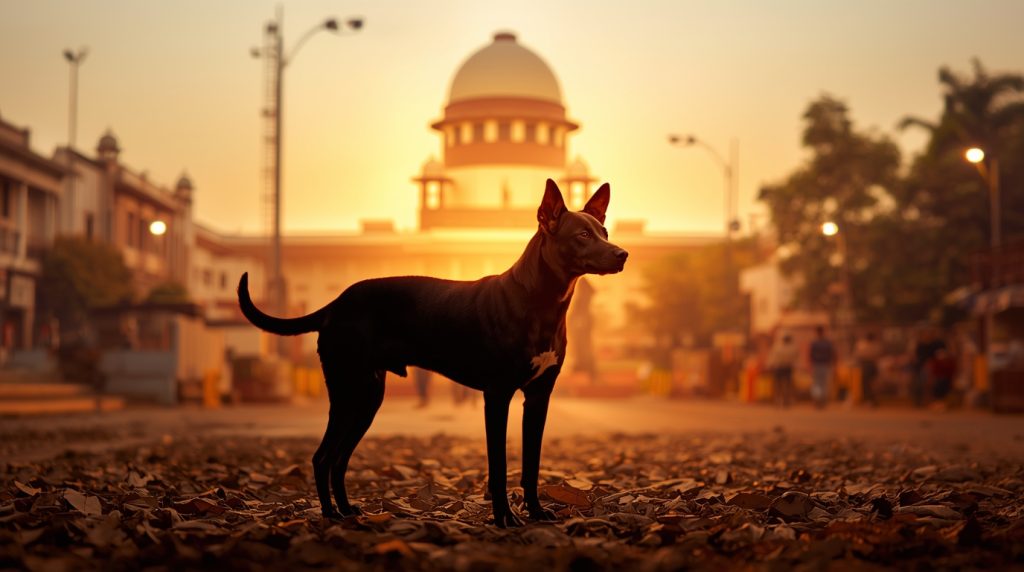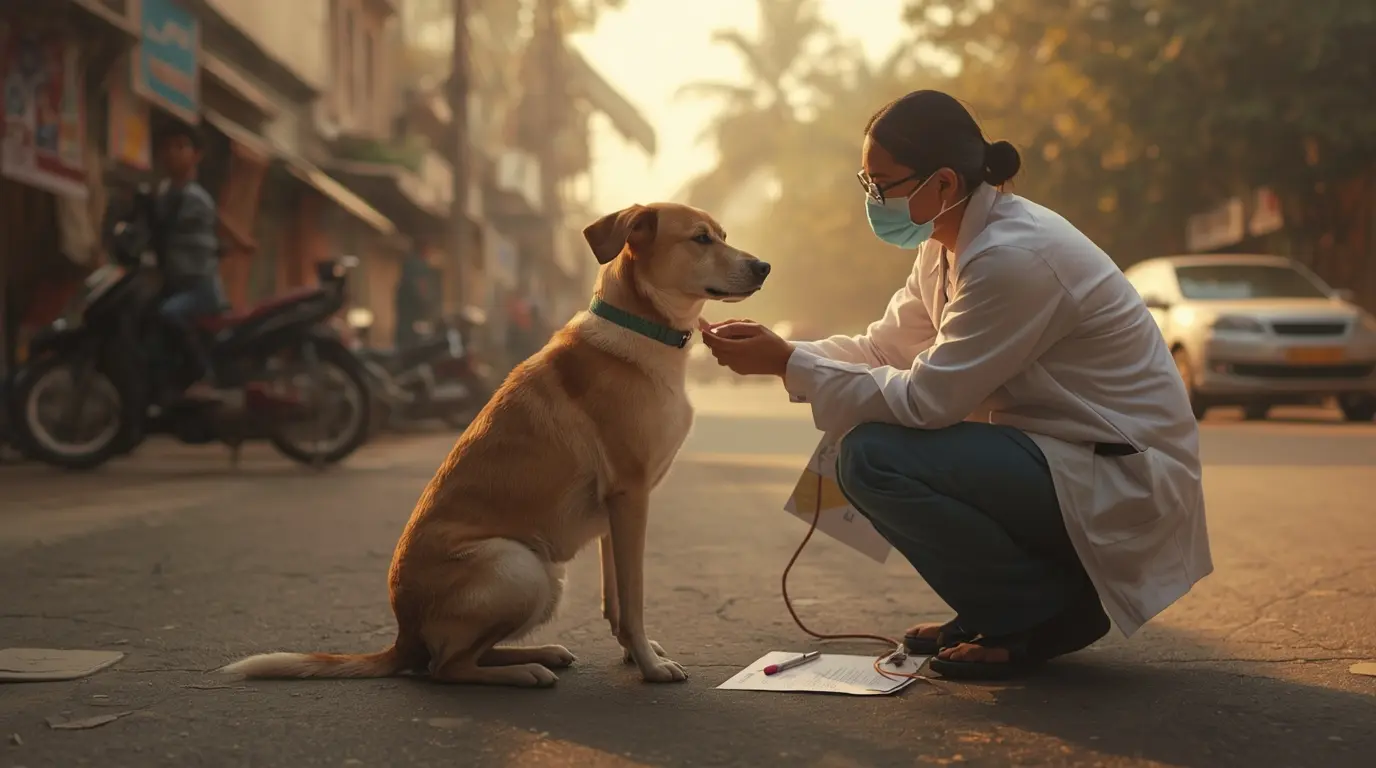India’s Supreme Court Upholds Compassion for Delhi’s Stray Dogs
In a groundbreaking ruling that is being hailed as a win for compassion across the country, India’s Supreme Court has reversed a previous order that said Delhi must permanently remove its stray dogs from the streets. The new judgment seeks to balance the need for public safety and the humane treatment of Delhi’s estimated three lakh stray dogs.
The New Ruling
On August 22, 2025, a three-judge bench of the Supreme Court changed its August 11 verdict, which had directed that every stray dog in the capital must be captured and held for life within eight weeks. The updated order tells officials to instead catch stray dogs, sterilize and vaccinate them, only keeping them from being relocated if they are rabid or dangerous.
Simultaneously, to limit the formation of larger packs, the judges prohibited public feeding in Delhi. Local authorities must now set up designated feeding zones in each municipal ward, ensuring dogs are both cared for and not drawn into crowded packs.
Public Outcry Forces Rethink on Stray Dogs Policy
A directive issued on August 11 to round up and relocate stray dogs set off an uproar that swept animal welfare groups and everyday citizens across India. Many argued the plan ignored reality: there aren’t enough rescue teams, facilities, or funding to carry out such a directive, and the strategy risked inflicting unnecessary suffering on dogs and on the many people who care for them.
The up-and-coming ruling has evidently lessened the strain, and animal advocates are breathing easier. “It was an unexpected, unwarranted, and impractical order,” stated Dr. Sarungbam Yaiphabi Devi, head of a Delhi sterilization clinic. She and several groups pointed out that the city has no extra kennels for the roughly one million dogs on its streets, and the ones that do exist are bursting at the seams and always low on funds.
The Scale of India’s Stray Dogs Challenge

According to the Press Trust of India, India’s stray dog population has crossed 62 million. Delhi, a city of 20 million people, adds its own layer of complexity with an estimated one million strays. This imbalance keeps street-level conflicts, animal rights discussions, and public health talk in a delicate dance.
The latest figures reveal that India is responsible for a shocking 36% of rabies fatalities around the world, the World Health Organization reports in the ongoing court case. The numbers paint a public health emergency that compels officials to strike a balance: reduce the rabies threat while treating the country’s street dogs with basic compassion. Memphis is rising concern, particularly for young kids who face the highest risk of bite injuries.
Cultural Context and Community Bonds
Conversations about Delhi’s stray dogs are impossible to separate from Hindu customs and neighborhood ties. In devotional stories, dogs are understood to be the attendants of Bhairava, an aspect of Shiva responsible for boundary protection. Therefore, putting leftovers out for them is seen not just as charity; the tradition promises the benefactor safety and, by extension, community stability.
In many parts of the capital, these animals have not only survived on scraps; they have formed networks. Residents adopt and name dogs passing through their gates. City chronicler Mayank Austen Soofi observes: “Street dogs have woven themselves into the fabric of community—they have wallets with grocers, good mornings with store owners, and bedtime stories with families, not to mention lifelong chats with the homeless, who treat them like brothers and sisters”.
This web of altars, kindness, and everyday connection is what turned the community’s mood after a judge’s initial order to clear and cull dogs. The outcry and the subsequent relief are, in many ways, the louder echoes of the same ritual: jugadu dhobi protecting the neighborhood by sharing crumbs, and halos of protection returned, moment to moment, by wagging tails.
Implementation Challenges Ahead
Animal welfare groups applauded the revised ruling, but the road to success is still rocky. The court hasn’t explained what, exactly, an “aggressive dog” is, leaving open the possibility that different places will interpret the term in very different ways. This gray zone could mean that the new rules are applied unevenly across neighborhoods.
Another hurdle is that every municipal authority must now set up special feeding spots for stray dogs in every single ward. This is no small task, and planners must tread carefully to prevent feeding stations from turning into new hotspots for large, aggressive packs.
Funding is perhaps the biggest brake on success. Meenakshi Bareja, who runs a shelter on the outskirts of Delhi for 78 stray dogs, summed it up like this: “We need 500,000 rupees ($5,700) a month, and we are always running short”.
A National Policy in the Making
The challenge is not limited to Delhi, and the Supreme Court sees that clearly. It has broadened the case with an eye to crafting a single, nationwide blueprint for how we deal with stray dogs. The court has also added all states and Union Territories to the case as parties, and it has taken control of similar lawsuits now sitting with various high courts.
The takeaway is clear: the court wants one national game plan, not patchwork fixes for every region, to control stray dog numbers in a way that’s kind to the animals and still keeps the public safe.
Conclusion: Bridging the Divide
The Supreme Court’s updated Delhi stray dogs ruling is a plus for animal welfare but doesn’t overlook that people also need to feel secure. The focus is on spaying, neutering, and vaccinating as the smart way to keep dog numbers in check, plus the plan now includes dog feeding zones to cut down on run-ins.
As Delhi and other Indian towns roll out the plan, the real hard work starts: showing kindness to dogs while making sure residents feel safe. Success will hinge on keeping animal birth control programs running, making sure there’s enough money for yearly spay/neuter and vaccine rounds, and getting neighborhoods on board so people and dogs can share the streets in peace.
The court ruling confirms what countless Indians already know: the street dogs we see on every city block are not just problems to be solved—they are part of the community itself. Instead of ordering mass removal, the judges ask for a national policy that treats the dogs with care and respect. This thoughtful, quieter path is a potential blueprint for any country facing the same tough question about how to keep cities kind and safe for animals.
Source: https://edition.cnn.com/2025/08/22/india/india-stray-dogs-supreme-court-intl-hnk-dst
For more incredible stories of everyday news, return to our homepage.




